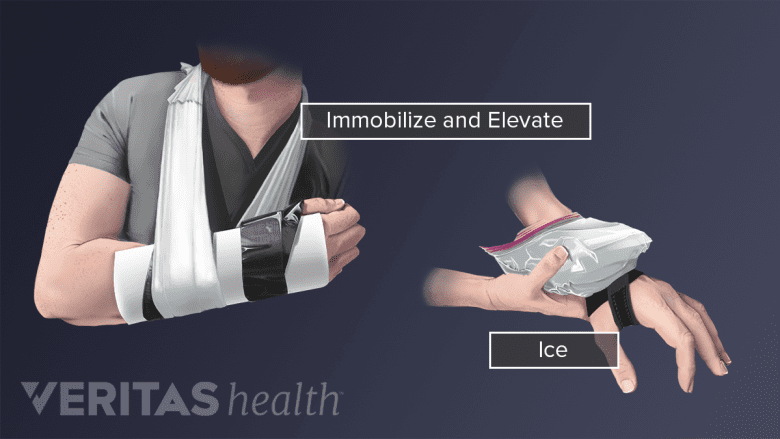If a distal radius fracture has potentially occurred after a fall or other accident, individuals should seek urgent medical care—particularly if there is noticeable deformity, bone protruding through the skin, or the fingers are numb or losing color.
See What to Do When a Wrist Injury Occurs
If the pain is manageable or there is no obvious sign of deformity, patients may choose to treat the wrist at home first, and then see their physician in the next day or two if symptoms don’t subside.
See Treating Acute Sports and Exercise Injuries in the First 24 to 72 Hours
In This Article:
- Broken Wrist (Distal Radius Fracture)
- Causes and Risk Factors for Distal Radius Fracture
- Symptoms of a Distal Radius Fracture
- Diagnosing a Distal Radius Fracture
- Treatment for a Distal Radius Fracture
- Nonsurgical Options for Treating a Distal Radius Fracture
- Surgical Options for Treating a Distal Radius Fracture
- Recovering from a Distal Radius Fracture
Immediate care for a potential fracture should include the following measures:
- Immobilize the wrist with a splint or brace.
- Elevate the wrist above the level of the heart.
- Use ice therapy for 5 to 10 minutes every hour, which can ease swelling and dull pain signals.
How Resetting Decisions Are Made
Once imaging tests have been done and physicians can see the nature of the fracture, they can determine how much reduction (the resetting or realigning of bones) is needed and how best to maintain the reduction while the fracture heals.
The level of reduction needed is controversial and may depend on the age and activity level of patient. Older or less athletic patients may achieve the same level of pre-fracture function even if perfect anatomical alignment is not restored. Also, because children’s bones are still growing, many can recover full function with no reduction and simple casting—even if there is some bone displacement.
However, any fracture that is unstable or involves significant fragmentation is going to require a surgical treatment approach, because the fracture is less likely to maintain its alignment with simple casting.
Physicians need to weigh many factors when they decide how much realignment needs to be done and whether it requires surgery (open reduction) or not (closed reduction). Patients should discuss the advantages and drawbacks of all potential approaches with their physician.






